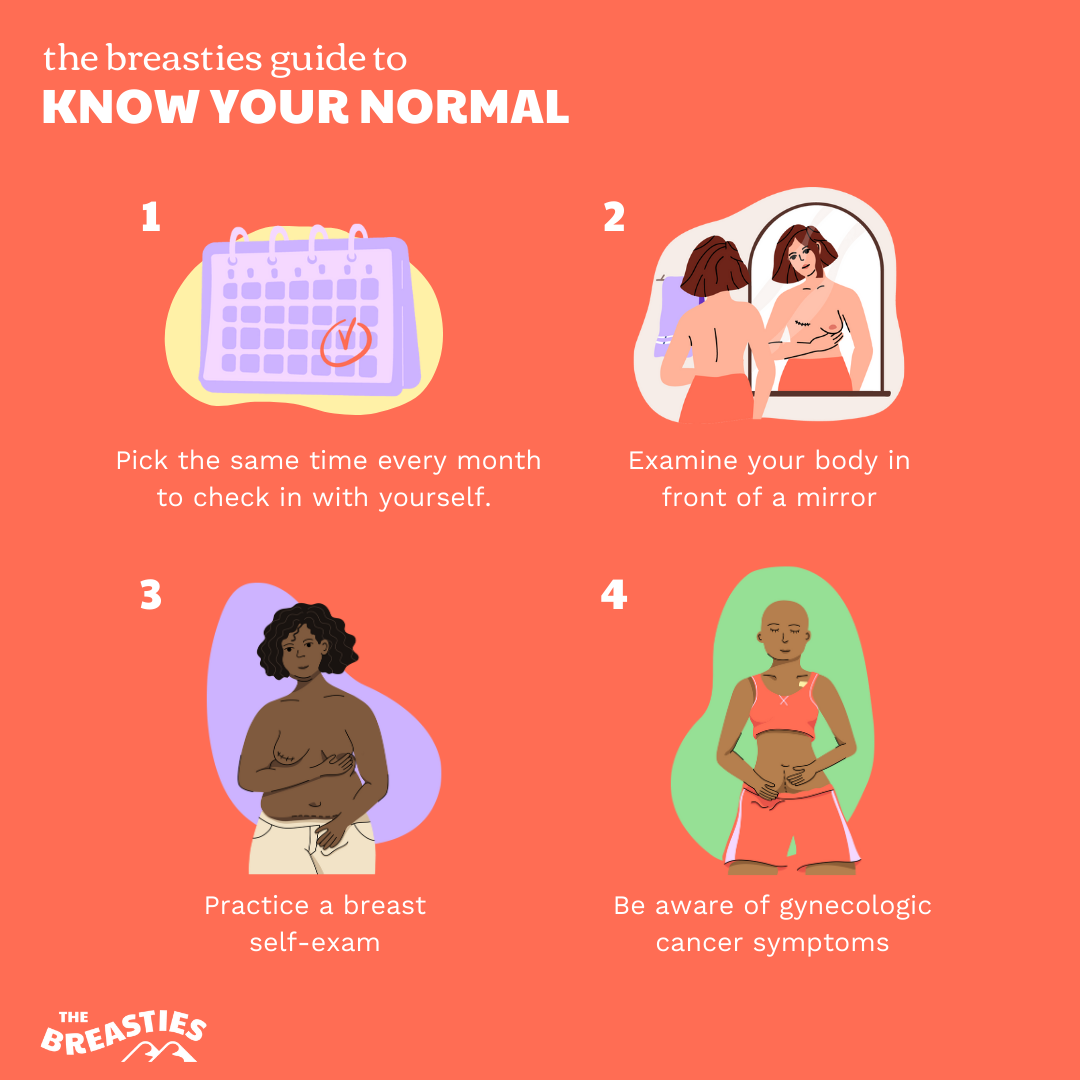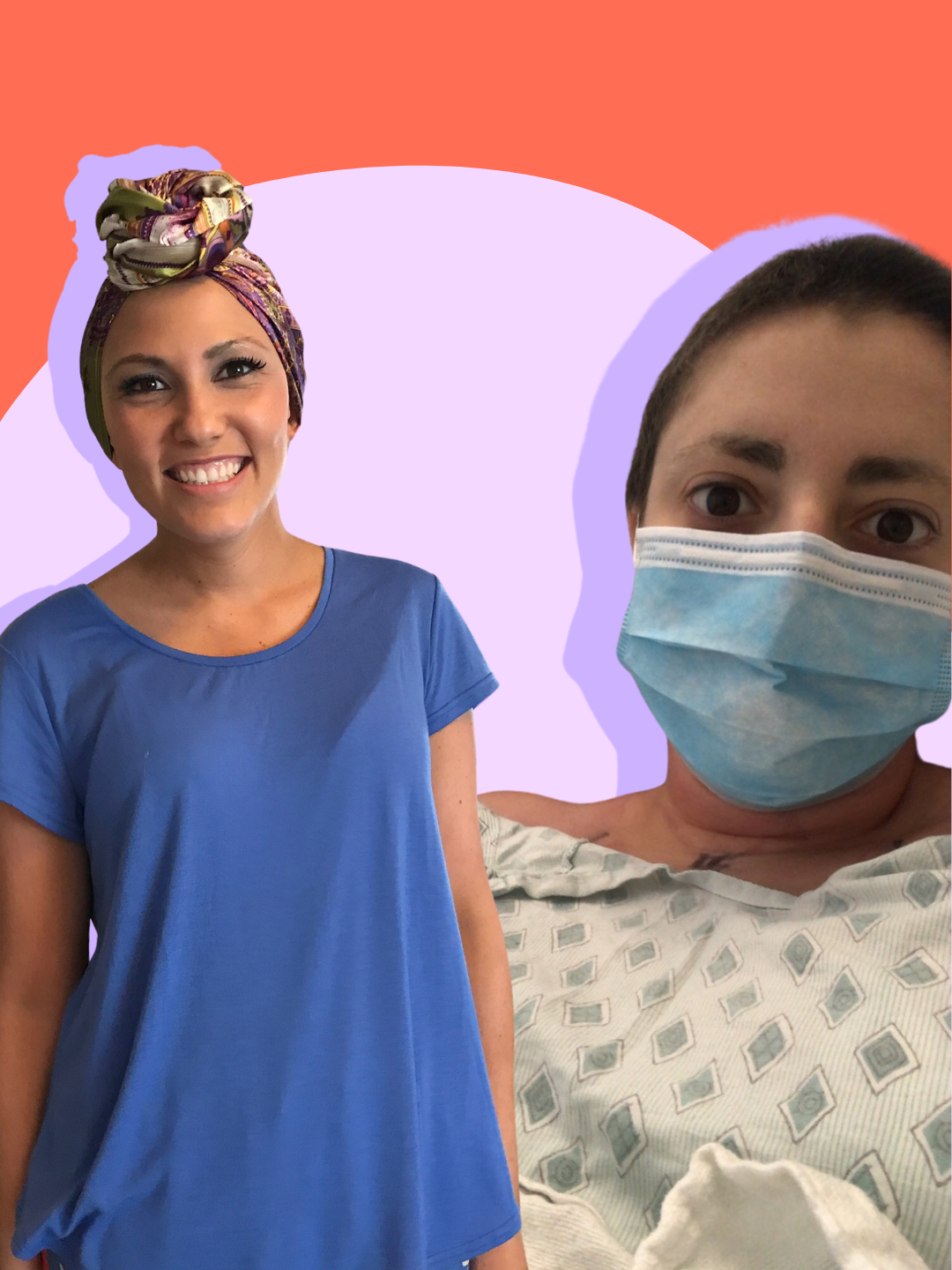Medically reviewed by M. Yvette Williams-Brown, M.D and Kara Leigh Smythe, M.D.
Only 14 percent of cancers in the United States are detected through a recommended screening test, according to new research from NORC at the University of Chicago. In fact, only four types of cancer — breast, cervical, colorectal, and lung — have a screening test recommended by the United States Preventative Task Force (USPSTF). This means that the vast majority of cancers are found by other means.
As someone impacted by cancer, you’re likely already aware of the monumental need for improved cancer screenings but where does that leave us now as a community impacted by breast and gynecologic cancer?
The Breasties recommends checking in with yourself and your body to help establish your baseline and what’s “normal” for you. Being aware of what’s normal for you can help you detect when something changes.
How to Practice Knowing Your Normal
Knowing your normal can empower you to detect changes that warrant checking in with a health care provider. Read below for the four steps to practice knowing your normal and what to look for.
1.Pick the same time every month and ask yourself, “Is this normal or is this different?”

Everyone’s normal is different and It’s a feeling that only you can determine for yourself. By finding the same time every month to check-in and ask, “Is this normal or is this different” you’ll help to establish your baseline.
2. Examine your body in front of a mirror

Visually inspect your body (both front and back) in front of a mirror to look for any changes.
- Breast area: Look for any signs of swelling, redness, dimpling of the skin contouring and changes in the nipples. Next, lift your arms and repeat these steps.
- Genitalia area: Have a general awareness of your genitalia and note any changes in symmetry, color, lesions, bumps, or lumps. Try using a hand mirror to inspect this area adequately.
3. Practice a breast self-exam

We know from our breast self-exam guide that 40 percent of breast cancers are detected by patients who discovered their own lump. Here’s how to perform a breast self-exam as part of knowing your normal:
- Use the pads of your fingers to check the entire breast and armpit area with light, medium, and firm pressure. Look for any lumps, hardened knots, or any other changes.
- Repeat the self-exam lying down. Begin by placing your right arm behind your head and use your left hand to examine your right breast and armpit. Repeat on the other side and look for changes in the nipples, including discharge.
4. Be aware of gynecologic cancer symptoms

It’s important to know your normal when it comes to gynecologic cancer because symptoms can often be vague and mistaken for something less serious. Some symptoms that may occur across multiple gynecologic cancers include:
- Abnormal vaginal bleeding, such as bleeding during intercourse or bleeding between periods
- Any bleeding after menopause
- Abnormal vaginal discharge, including changes in consistency or odor
- Pelvic or abdominal pain
- Pain during intercourse or urination
- New changes to bowel movements, such as constipation or diarrhea that does not resolve in 2 weeks
- New lumps in the vagina or on the vulva.
For vulvar cancers, symptoms can also include itching or burning sensation in the vulva, changes in color, or sores or ulcers on the vulva.
For ovarian cancers, other symptoms may also include persistent abdominal bloating, difficulty eating or feeling full quickly and/or feeling an urgent need to urinate or to urinate frequently.
New, persistent or worsening back pain may also be a symptom of advanced ovarian or cervical cancer.

If you notice changes, discuss them with a health care provider.
RELATED: Conocer Su Normalidad en Español







